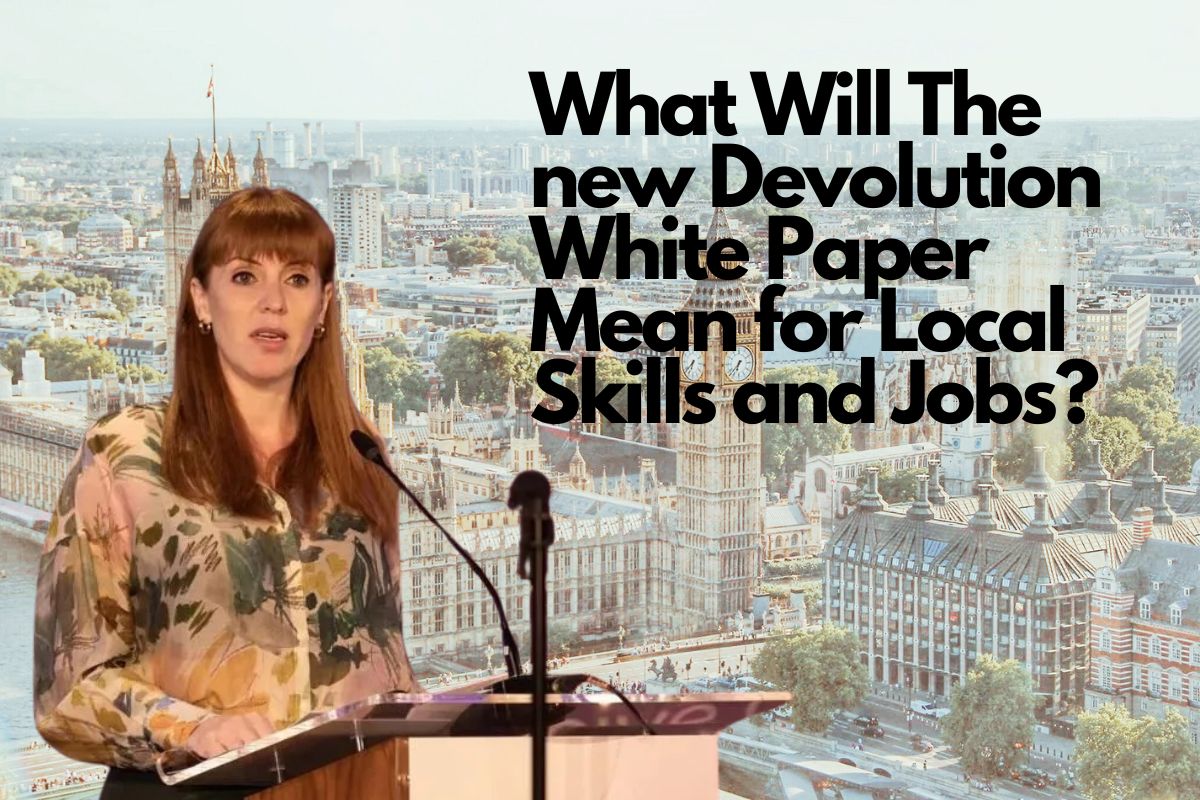The Demographic Upswing: More 16-24 Year Olds
Growing and growing until 2030
It has never been harder to predict but some things are clear. There will be more 16-24 year olds in England in the 2020s and their expectations and needs will change the education and training system.
The facts are fairly straightforward. The English birth rate hit another low point in 2001 and rose for the next 15 years. Like a classic radio wave pattern, the population veers from peak to trough as each generation grows up. If “Peak 20” is the high point for the number of 16 to 24 year olds, then we hit it in 1984, in 2010 and we’ll get there again around 2030.
Falling Numbers from 2010
The falling population shaped post-16 education in the 2010s. From Peak 20 in 2010, the fall in the number of 16-to-18-year-olds combined with a squeeze on funding rates to deliver public spending savings for the Treasury. DfE cut spending on 16-18 education from £7.7 billion to £6.7 billion – a real-terms cut of more than 20%.
Unemployment also fell
This allowed the Department for Work and Pensions to wind training schemes down to a skeleton service with a budget of £200 million budget. Meanwhile, although apprenticeships grow in political prominence, most of the new apprentices were over 25 – ranging from mid-career middle managers to care and retail staff enrolled on level 2 programmes.
Increasing Numbers from 2020
Having survived the trough of the last ten years, many education leaders were looking forward to an upturn in fortune. Demography is normally destiny in education so that, sometimes, all that institutions need to do is stand still and wait for their catchment areas to grow naturally. Colleges and universities could watch as the Department for Education scrambled supply school places to meet the basic need and think “our turn is next”.
DfE stops its projections of pupil numbers at age 16 but calculations AoC did last summer suggested growth of 11% in sixth form numbers over just four years. Even if nothing else changed, this would require almost £1 billion extra in DfE’s budget for demography. Some universities grew in the 2010s on growing EU student numbers and a rising entry rate. The initial entry rate of under-21-year-olds in higher education rose from 40% to 50%. Many institutions borrowed for growth on the assumption that if they built it, the students would continue to come
A Different 2020
As it is turning out, our 2020 visions were probably wrong. The pandemic has hit the sector like a Black Swan. Economic activity crashed in the shutdown and unemployment looks poised to soar. Entire sectors like hospitality and travel have been devastated and, while there may be a bounce back in the second half of 2020, they may be a big shift to new business models. Self-service technology in retail and elsewhere might replace human contact in the interests of safety but could also hit job numbers. In these circumstances, normal rules may not quite apply.
In previous recessions, higher unemployment has correlated with higher demand for post 16 education and training. This time around, young adults may defer before making a firm choice or find that what they want to do can’t be done. Students may try to defer their 2020 offers or see if they can re-sit their centre assessed summer grades. University residences may not fully reopen. Public transport may be more limited. Alternative options may also fall off. There is already a lot of interest in apprenticeships at age 18 but early signs from AoC surveys of colleges are that the places won’t be there. Colleges report that the number of new starts could fall by 50% or more. Predictions about AY 202021 are the stuff of budget nightmares but the underlying trends will remain.
Peak 20 in 2030 means a rising tide of 16-to-24-yearolds throughout the 2020s. The falling post-16 population provided Treasury with a demographic dividend in the 2010s so the next ten years should in theory see a payback. The fact that demand may be sluggish in the next 12 months does not mean that it will stay that way. The staying-on rate at 16 may rise. If there are no apprenticeships or jobs for school leavers, then participation in full-time education will rise above 91%. The drop off at ages 17, 18 and 19 may diminish. More people in their early twenties will be considering education and training alternatives to non-existent jobs.
Other assumptions will need to be re-thought. The Review of Post 18 education made suggestions about higher education living costs on the assumption that half of students worked alongside their studies. If there are fewer hospitality jobs, this may no longer be possible. And we may have to consider maintenance support for 19-24 year olds seeking a first full Level 3 in a high unemployment world. Better to provide the money so that young adults can learn or retrain than let them fester at home for lack of maintenance.
Issues for Post-16 Policy Makers
The pandemic has exposed many things about UK government policy making but in the field of post-16 education, there has been a lack of planning. We have known about rising demographic demand for a decade but very little has been done in preparation. If DfE has made any preparations they have been so secret to be almost invisible.
Given the great disruption visited onto society and the economy in 2020, perhaps there is a silver lining. If government had funded new post-16 centres in urban transport hubs, then perhaps these would now stand vacant this September. However, be that as it may, it’s the planning not the plan itself that matters.
The process of thinking about, forecasting and discussing future demand should be one of the threads that joins up those providing education and training with the demand generated by economic and social need. We’ve known for years that there are big mismatches between supply and demand but lack a mechanism for resolving these.
A plan – and some planning – would be a good first step to be ready for the next “Peak 20”.
Julian Gravatt, Deputy Chief Executive, Association of Colleges (AoC)
‘Revolutionary Forces‘
In the immediate aftermath of the Covid-19 pandemic, it is easy to forget that there were wider revolutionary forces at work on the UK’s economy before the virus outbreak.
With issues such as Brexit, the rise of automation in the workplace, longer working lives, and poor UK productivity brought into even sharper focus, education and skills organisations, NCFE and Campaign for Learning (CfL), jointly commissioned the ‘Revolutionary Forces’ discussion paper.
Published on 6 July 2020, the collection of articles, penned by experts from the FE sector, as well as labour market economics, employment and mental health, urges Government to ensure that the plans outlined in the forthcoming post-16 white paper are sufficiently flexible to meet the immense changes faced by the UK economy throughout the 2020s. The authors explore some of the key challenges facing the nation throughout the 2020s which the DfE needs to take into consideration when writing their recommendations:
The authors are:
- Rt Hon. David Laws, Executive Chairman, Education Policy Institute – Covid-19: Mending the Economy, Repairing the Public Finances
- Paul Nowak, TUC – The Covid-19 Inheritance: Building a Fairer and Greener Britain
- Ewart Keep, Oxford University – Covid-19 and Brexit: The Impact on Industry, Jobs and Skills
- Duncan Brown, Emsi – Declining Sectors and Growing Sectors Post Covid-19
- Kathleen Henehan, Research and Policy Analyst, the Resolution Foundation – Low Pay, Flexi-Jobs and Skills-Based Immigration
- Andy Durman, Managing Director, Emsi UK – Automation, Covid-19 and the Future of Jobs
- Stephen Evans, Chief Executive, Learning and Work Institute – Looming Mass Unemployment
- Julian Gravatt, Deputy Chief Executive, Association of Colleges (AoC) –











Responses